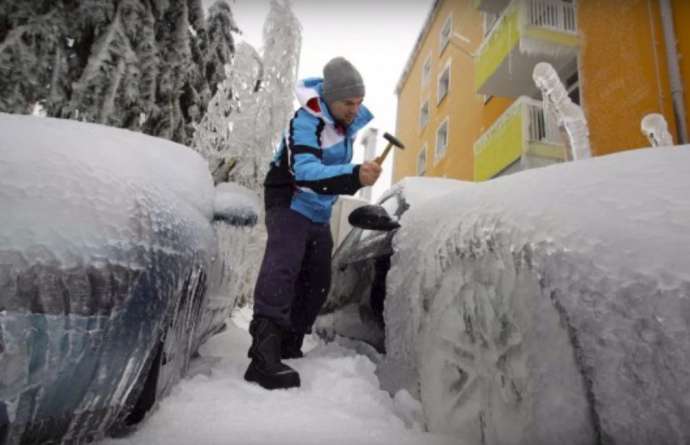STA, 10 February 2019 - Slovenia was hit by a major ice storm in late January 2014. Lasting ten days and coating vast swathes of the country in thick glaze ice, the extreme weather event left deep scars on Slovenian forests that remain painfully visible.
Six million cubic metres of wood had to be felled as a direct consequence of the glaze ice, more than the typical annual nation-wide wood harvest, with an almost three million cubic metres more left to rot in forests.
The direct economic damage to forests has been estimated at EUR 214m, with total damages significantly higher, at EUR 429m, due to the destruction of rail, power and telecommunications infrastructure.
Infrastructure has been repaired, but forests remain scarred, having been additionally hit by a massive bark beetle outbreak in 2014-2018 that condemned over seven million cubic metres of spruce to felling, and a severe windthrow in late 2017.
The glaze ice destroyed mostly broadleaves and the bark beetle attack decimated spruce. Combined, these events have permanently altered the species composition of Slovenian forests.
Experts believe spruce, because of its economic importance the dominant tree species in the country, will be gradually supplanted by more robust species such as Douglas fir.
But this will merely accelerate the trend already precipitated by climate change, which is likely to drive spruce out of Slovenian forests in the long term, according to the Slovenia Forest Service.
Forest regeneration will not be left entirely to chance, though. While 27,000 hectares of forest has been severely affected by extreme weather, 1,200 hectares will be replanted artificially.
Foresters are planting around 20 species of trees depending on growing site, from spruce and beech to oak, maple, wild cherry, larch and fir.
The massive ice storm of 2014 is considered a once in a century event. "The likelihood of glaze ice across such a vast area is very small. It takes a combination of several conditions that is luckily very rare," meteorologist Brane Gregorčič says.






